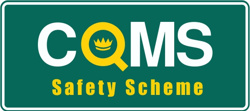In the world of roads and junctions, changes are occurring at an increasing pace, both in the UK and globally. Gone are the days of the highway engineer churning out ill-considered road schemes that merely serve to increase the number of trips by car each year in our towns and cities.
As the health impacts of sedentary, car-based lifestyles, exhaust emissions and road casualties are increasingly recognised, people are demanding more liveable cities that cater for active travel choices like walking and cycling. At the same time, younger people are getting their driving licenses later and driving less than previous generations.
Going Dutch on design
Trends in design and policy vary by country. In the UK, perhaps the main trend is towards either removing roundabouts, or potentially modifying their design, and the design of signal-controlled junctions, to designs that are ‘Dutch’ or Continental. This shift in thinking is occurring because British roundabouts are often relatively fast-moving and focussed on maximising vehicle capacity, and consequently, they can be quite unfriendly for pedestrians who wish to cross the road in their vicinity.
Similarly, cyclists are often put at risk of getting sideswiped. Consequently, the Transport Research Laboratory (TRL) constructed and trialled a Dutch-style roundabout. This design of roundabout features more angular geometry, reducing vehicle speeds, and more importantly, has pedestrian crossings on each entry/exit arm, and a parallel segregated cycle path that runs separate from the circular carriageway.
The outcome of the trial was that most pedestrians and cyclists, as well as many drivers, preferred this Dutch design, and felt that it would improve safety. Therefore, this design may start becoming popular in the near future, and with around 26,000 roundabouts in the UK, there is no shortage of potential candidates for modification.
Cycle friendly junctions
Signalised junctions are also the target of potential changes, both in the UK and USA. The increase of bicycle lanes and paths has led to a requirement for signal-controlled junctions to be re-thought. Specifically, cyclists are at the greatest risk of severe or fatal injury from a left (or in USA, right) hook, where a turning truck or bus sideswipes an adjacent cyclist, knocking them over or even crushing them. The ways to prevent this include segregating the path on the approach to the junction, bringing it away from the road carriageway by several metres, and ideally, having separate traffic light phases for bicycles to prevent conflict.
The UK’s Department for Transport approved the use of low-level bicycle traffic lights in 2013, and consequently, such junctions may now be possible in the UK. Unfortunately, the understanding of how properly to design such junctions is not widespread in the UK or USA, and official design guides lack the correct information, often promoting ‘Dutch’ features, such as two-stage cycle turn boxes mid-junction, that aren’t Dutch at all, but are instead dangerous. For example, within a week of a re-designed “Dutch-style cycle-friendly” junction opening by the Itchen Bridge in Southampton, a cyclist was knocked over by a car.
Similarly, other cheaper measures, such as blind spot (Trixi) mirrors have been shown to be ineffective in reducing cyclist collisions. Thus, well-engineered infrastructure measures are the solution, but their designs need to be well informed through information on best-practice, and as with roundabout re-designs, will require somewhat substantial financial investment.
The USA approach
The USA differs from the UK in some ways: having had virtually no roundabouts two decades ago, there are now almost 5,000, and this number is growing fast. Florida, the state with the most roundabouts, has seen a significant change in attitude towards them: roundabouts are now the default choice of junction for new roads, even on state-level roads, and therefore if a signalised junction is desired instead, a full assessment is required to justify why a roundabout is not the best choice.
This change is likely due to several factors, but the improved safety, decreased vehicle waiting times, and lower maintenance (no lights to maintain) all help make them attractive. At the same time, a Complete Streets approach to planning, design, and construction of transport facilities is now mandated in Florida and several other states, a measure that should make roads friendlier to all road users.
Lane widths of existing roads are being narrowed to create space for bike lanes, whilst road diets (removing driving and parking lanes) are popular in central business districts, thereby creating room for cycle paths, footways, and other pedestrian-oriented infrastructure.
Cars no longer drive policy and design
Whilst moving towards liveable, active, pedestrian-oriented design for towns and cities seems to be the dominating trend in Europe and the USA, there are other trends worth taking note of. For example, particularly in Asia and South America, Bus Rapid Transit (BRT) is rapidly growing in popularity. These public transport systems utilise high capacity buses that stop at subway train-like stations along a route that features bus-only travel lanes, thereby allowing fast and efficient travel by bus.
However, this inevitably requires either a reduction in car lanes, or the construction of new roads to be wider. More importantly, it is likely that roads and junctions around the world will also change in future years to cater for driverless cars, although what this will entail has yet to be seen. Whatever the future may hold, one thing seems certain; we are unlikely ever to see a return to the car-centric design that has driven policy and design over the past century.






